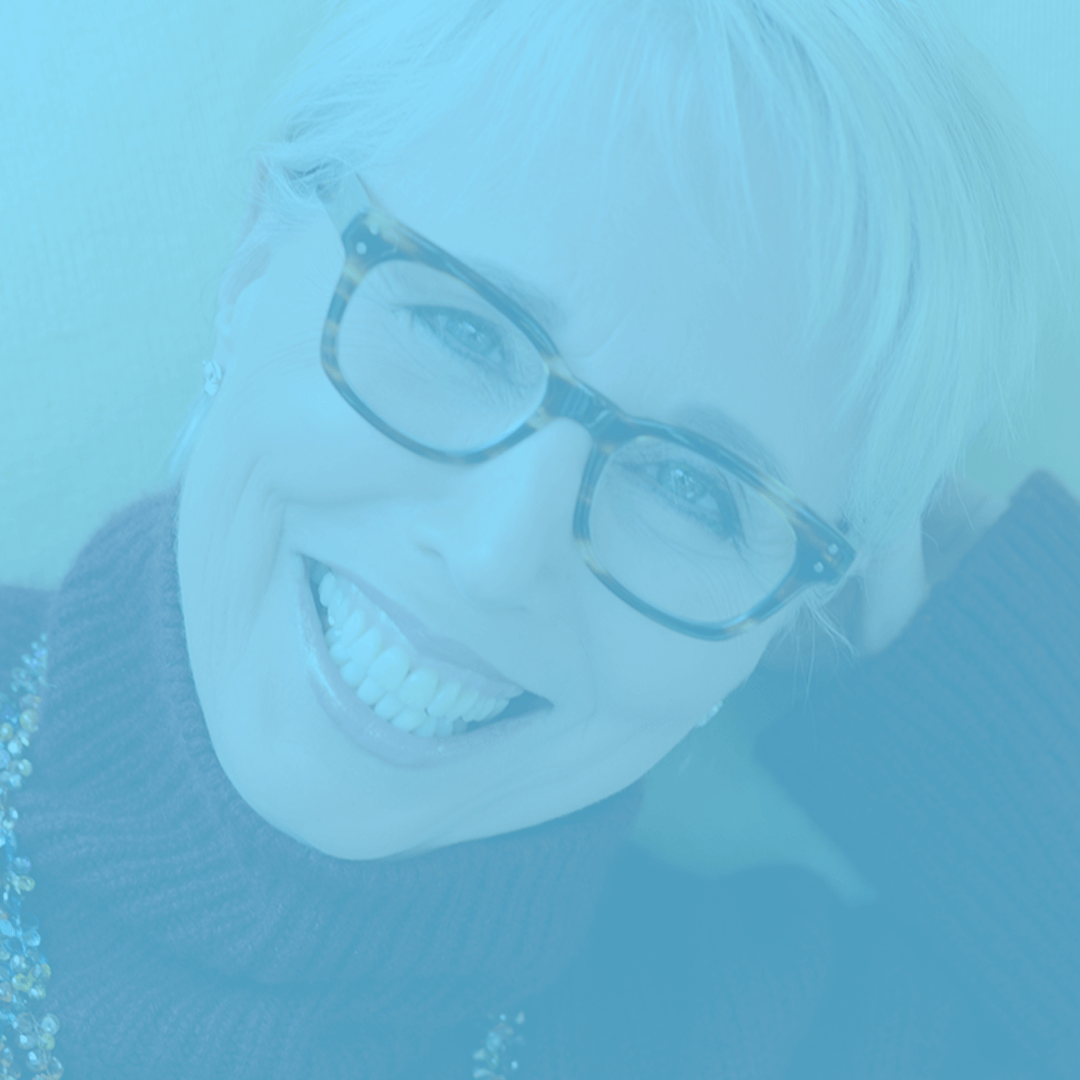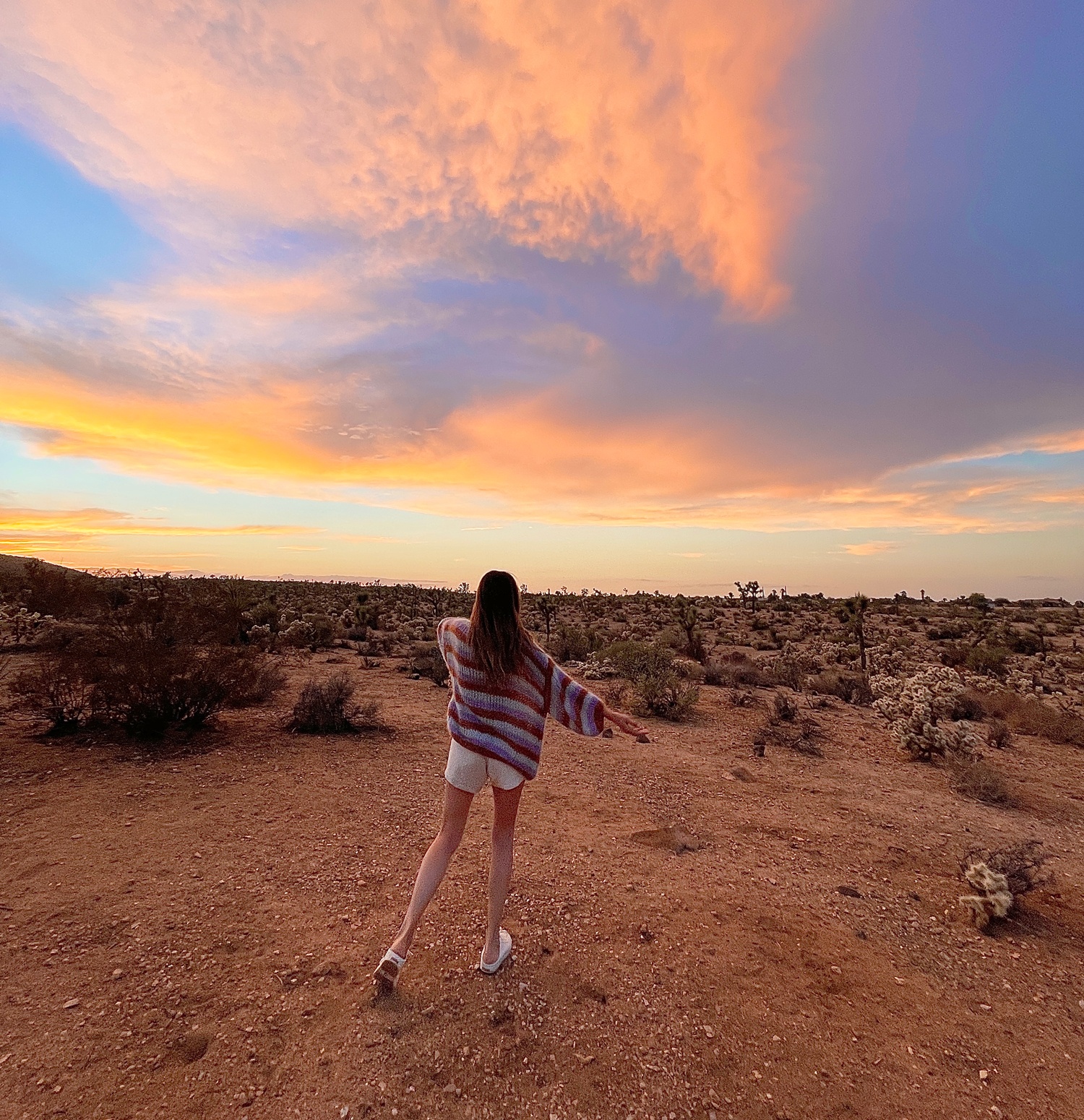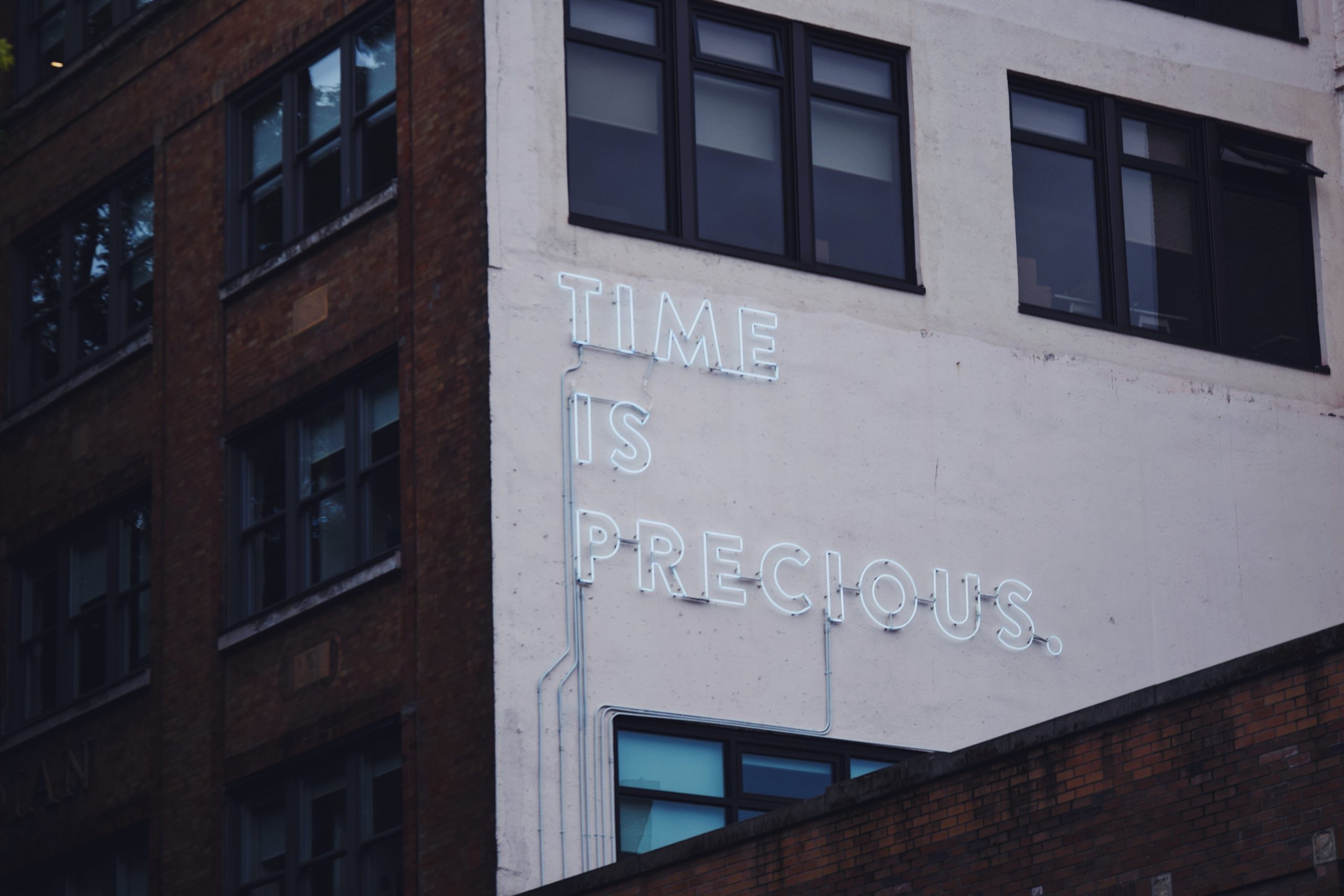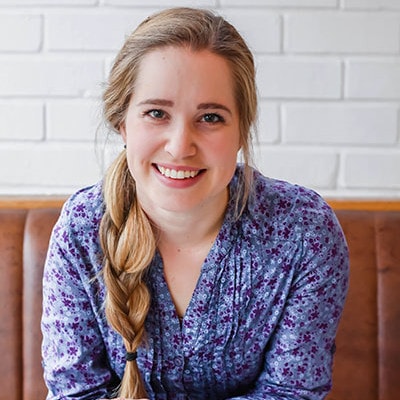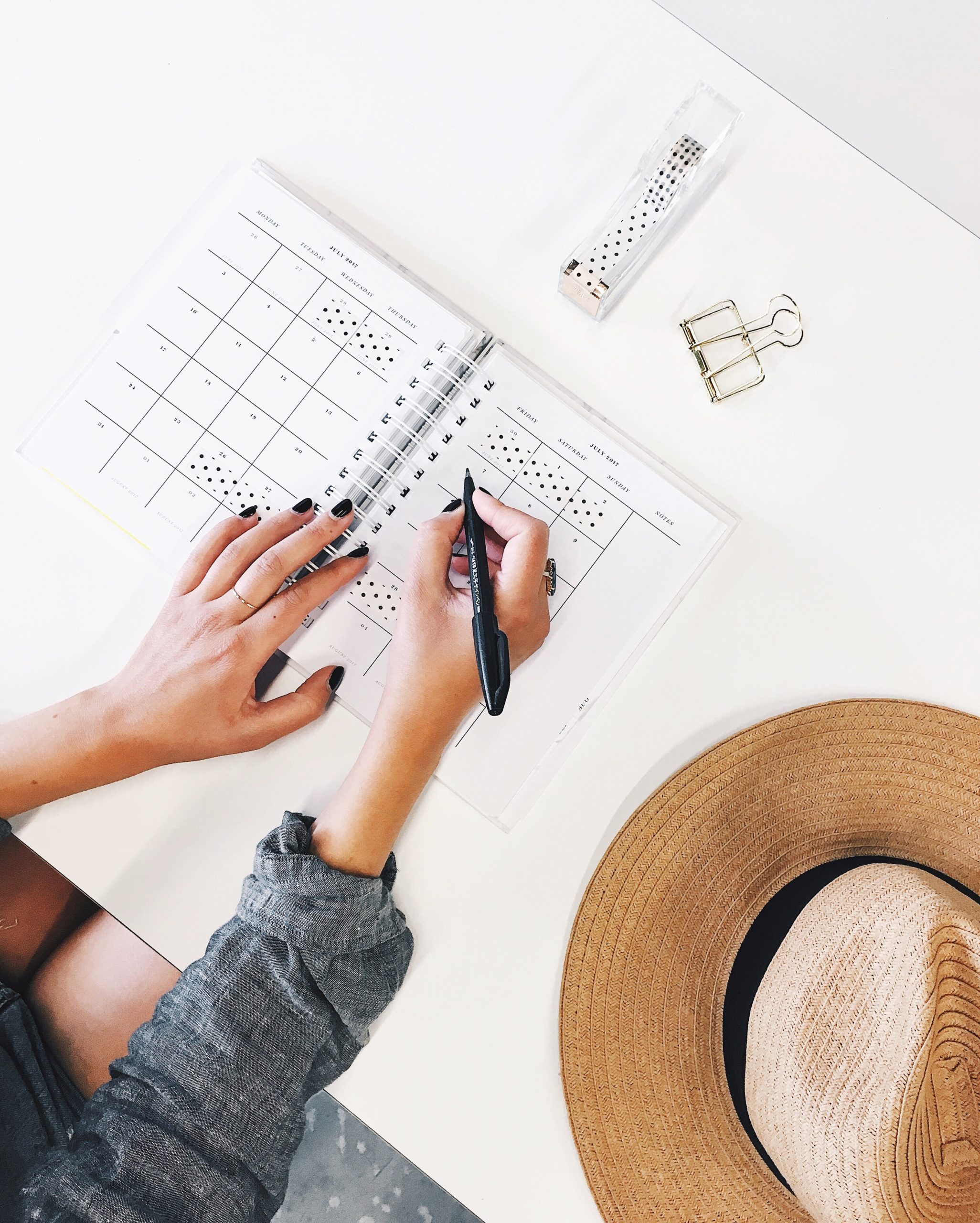If you’re ready to shed whatever is holding you back and step into who you are truly meant to be, this episode is for you.
I had the honor of meeting today’s special guest at an event in New York, and I was so blown away by her loving presence and the exercises she had us work through to feel more connected to ourselves and to quiet our self-doubt and inner criticism.
You’re probably wondering, who is this magical lady?
Geneen Roth is the author of Women Food and God: An Unexpected Path to Almost Everything, which spent 34 weeks on the New York Times Best Seller list, with 18 of those weeks at number one! She’s authored 9 other books, taught workshops with thousands of people and has appeared on The Oprah Winfrey Show, 20/20, The Today Show, Good Morning America and The View.
In this episode, we talk about how Geneen came up with her latest book, This Messy Magnificent Life: A Field Guide. Out of her own past struggles, feeling as if she would never fit into her own skin, much less into the world around her, Geneen tackles how we can move beyond our past and build a life that reflects who we really are.
Geneen has decades upon decades of wisdom to share, and I can’t wait to hear what ya think. 🙂
Check out the episode below:
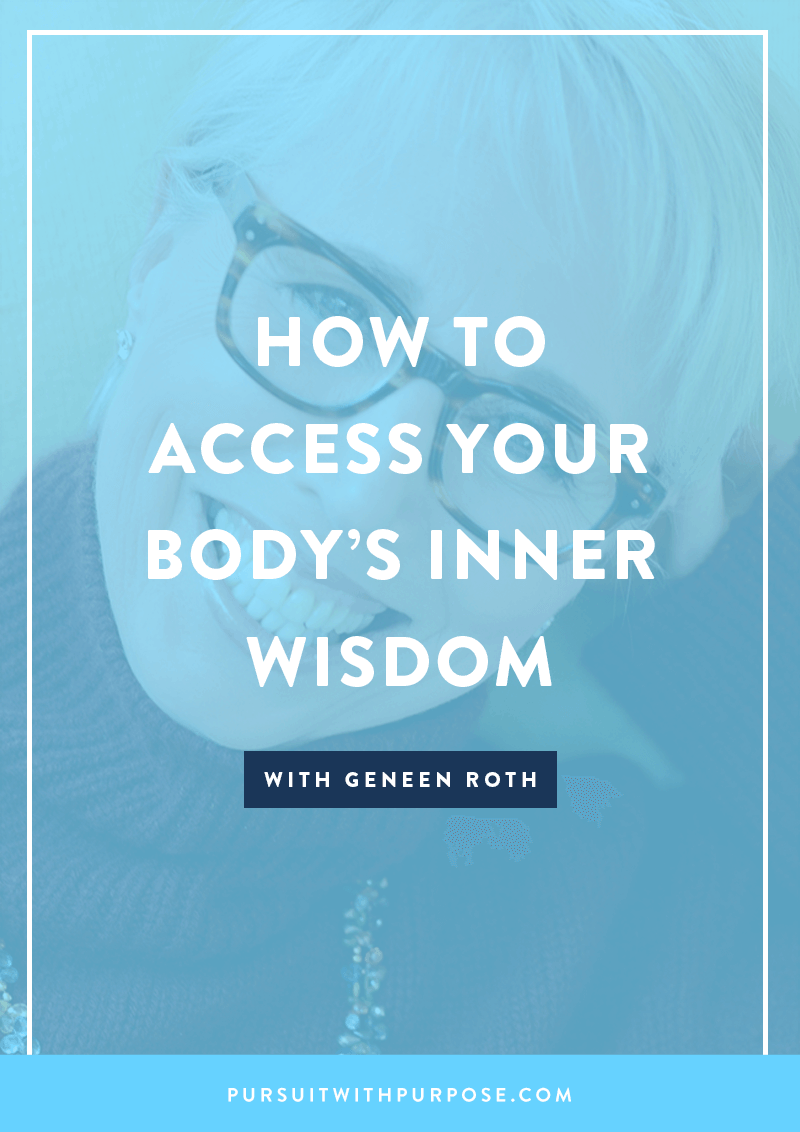
In this episode, you’ll hear about things like…
- The very real consequences we face by not pursuing personal development and healing.
- A special practice Geneen recommends people do to get in touch with our bodies.
- Geneen’s insanely radical year of “not complaining”, and the effect it had on her.
- Geneen’s signature 4-step method for helping people change their lives.
- How you can start re-wiring your brain – in just one minute a day!
Some Questions I ask Geneen…
1. You give a suggestion that for 5 minutes a day, in just one minute increments, we notice where we are physically. Can you tell us more about that practice and how it helps?
2. What is the consequence of not pursuing personal growth?
3. What’s your basic method for helping people change their lives?
Links from the interview:
- Geneen’s Website
- Geneen’s Books
- Geneen on Facebook
- Geneen on Twitter
- The Top Five Regrets of the Dying, by Bronnie Ware
What do you think?
I’d love to hear your thoughts on this episode. Are you on a path of prioritizing personal development? What are you currently working on to be a better version of yourself?
Here’s how to subscribe + review
Want to be the first to know when new episodes are released? Click here to subscribe in iTunes!
Also, podcast reviews are pretty darn important to iTunes and the more reviews we receive, the more likely we’ll be able to get this podcast and message in front of more people (something about iTunes algorithms?). I’d be extremely grateful if you left a review right here letting me know your favorite part of this episode.
#PursuitWithPurpose
Loving the podcast? I encourage you to use the hashtag #PursuitWithPurpose to show our PWP tribe how you live your purpose everyday. Plus, you’ll get to sift through the hashtag to find other business owners who care about community and connectedness over competition and comparison. And I’ll be reposting some of my favorite images and stories, too. 🙂
Thank you for listening!
Transcript
Read the Interview Transcription HereWelcome back, Pursuit with Purpose tribe. So I had the honor of meeting today’s guest at an event that I was at in New York. I was so blown away by her loving presence and these exercises that she had us do at the event to help us feel more connected to ourselves, and to really quiet the self-doubt and inner criticism within us. Now I am thrilled to share her with you today too. Geneen Roth is the author of “Women, Food and God”, which spent 34 weeks on the New York Times bestseller list, 18 of those weeks at number one, which is virtually unheard of. Now in addition to that, she’s authored nine other books, taught workshops to thousands of people, and has appeared on The Oprah Winfrey Show, 20/20, the Today Show, Good Morning America, and The View. So basically, she’s kind of a badass and you should listen to whatever she has to say. She also recently came out with her latest book, “This Messy Magnificent Life”, and we’re going to chat a little bit about it in this interview too.
Now after years of teaching workshops on weight, food and money, Geneen realized that there was a connection between those issues and a way to solve them all together. Out of her own past struggles with feeling as if she would never fit into her own skin, much less in the world around her, Geneen tackles how we can move beyond our past and build a life that reflects who we really are. I am so down with that, I hope you are too. In this conversation, we cover a wide range of topics from Geneen’s four step life changing process and her advice on accessing our bodies and our wisdom to something that Geneen calls the crazy aunt in the attic. Now Geneen has decades of wisdom to share which is perfect for anyone who wants to shed whatever is holding them back and step into who they are truly meant to be. Let’s get started.
Melyssa Griffin: Hey, Geneen. Welcome to the show.
Geneen Roth: Thank you so much, Melyssa. I’m really happy to be here.
Melyssa Griffin: Thank you, me too. So I want to first talk about your book, “Women, Food and God”, which was on the New York Times bestseller list for I think it was six months, which is incredible, (a), and (b) I’m curious with this new book that you just came out with, “This Messy Magnificent Life”, how does this book relate to “Women, Food and God”?
Geneen Roth: Yes. Well, “Women, Food and God” was about the relationship, my relationship, other people’s relationship, because I do teach long retreats—not long, six day retreats; the relationship with food and using food as a doorway to the core beliefs of our lives, like what we believe about joy and deprivation and shame. I mean what we feel like we’re allowed to have or not. I use the food that you take every day or I say the world is on your plate. And so that’s a reflection of your own beliefs, just like everything is a reflection of what you believe; how I’m talking to you now, what I do. I mean my relationship to work. It’s all an expression of me. It’s not somebody else’s expression. It’s an expression of me. And so my beliefs and what I believe is possible, come out all the time. What I realized after I finished “Women, Food and God” was that there were many areas of my life that were not healed. Though I had healed my relationship with food, I was still waking up in a kind of negative, I call it a trance of discontent or a trance of worthlessness, of not feeling enough, of seeing what was missing and not what I had. I realized that I didn’t want to go through the rest of my life like that. And so I wanted to see if it was possible to use the tools that I had developed to heal the relationship with food in the entire rest of my life or in the rest of my life with my core beliefs and in everyday situations. And so that’s what prompted me to write the book.
Melyssa Griffin: I’m so glad that you said that, because for me personally, and I think for a lot of people listening, we get to this point where maybe there’s one area of our life that’s excelling or maybe we’ve healed that area, and we think well why are all these other areas not working or like what’s the deal here. Why am I not feeling good even though this other thing is doing really? I think that can be a big challenge. Now one thing that you mentioned just now is that you noticed that and you wanted to take action and find ways to heal these other parts of your life. What would you say for people who are listening, who feel like they’ve got a pretty good life already? They’re kind of content. They know that there’s areas they could improve, and if you were looking at their situation, maybe you would think there’s areas that could dramatically improve, but they just don’t think that they really need to put in the time for personal growth, that they’re just going to live their life and that’s it. Basically, what’s the consequence of not pursuing personal development and healing?
Geneen Roth: Well, the first thing that I want to say is that you have to want to do this, because although it’s not hard, it does take attention and it does take some degree of effort. It doesn’t happen by just sort of sitting in a rowboat and getting pulled along by the currents and drifting along. This kind of change does take some attention, and so you’ve got to want it just like you have to want to do anything that takes attention. I mean you have to want to learn how to play poker if you want to play poker, how to dance if you want to dance. So this is like that. The consequence of that, well, I don’t know. I think it depends on the person. For me, the consequence would have been this feeling that I wasn’t quite showing up for my life, this feeling—and I see this in a lot of my retreat students, that they know that something else is possible, but they don’t really know how to access that. They don’t know what to do and they don’t know what they’re doing. They have this feeling that something’s missing, but they don’t even really know how to name it. What happens often is that people get to the end of their lives, and if you google as I say in “This Messy Magnificent Life”, if you google “deathbed regrets”, what you’ll find a lot of the time is that people will say I didn’t really show up in my life as it was, I was always waiting for the next big thing, and I was always thinking that when I got that next big thing then I could relax and then I would be fine. But in the middle of my ordinary life, padding to the bathroom, being with my kids, making breakfast, drinking tea, I was just always on to the next thing. I wasn’t really paying attention. I missed it. So that would be the consequence, feeling like you lived but you didn’t really live.
Melyssa Griffin: I love that. It resonates with, I think it’s another book called “The Five Regrets of the Dying”. A couple of them are that a) we didn’t show up as ourselves, we were always trying to be maybe somebody else and didn’t really feel like we were ourselves in our lives, and b) that we were chasing things rather than feeling content or being happy with the things that we have. There’s always something next like you’re saying. I like too, what you were saying about personal growth, where people notice that something’s missing but maybe they don’t know what it is. I think sometimes with this work, it can be scary not knowing what’s on the other side. Maybe it’s going to be worse or maybe it’ll be good, but I don’t know what it looks like. Just trusting that something good will come of doing that work on ourselves. So I like that mentality too. So I’m curious, for anyone listening, what’s your basic method for helping people change their lives?
Geneen Roth: Right. Well I have four step method. The first step of that is to, what I call it, stand in your own two shoes. By that, I mean occupy the space you’ve been given. Your body is the piece of the universe you can give and you have a body. Everybody listening to this has a body. Most of us are not occupying our body, most of us occupy it from here, up. We are located in our heads. If you ask somebody who they take themselves to be and where their sense of self is located, most likely they’ll say in their heads, because we love our minds and our minds zoom around from the past to the future. They’re oh so interesting. Very small amounts of people would say, “Oh, it’s okay for me to occupy this entire body, to feel my feet on the floor, my butt in the chair, to breathe, to feel my shoulders, my back, my belly. We treat our bodies as—or as I say in the chapter in the book called “Heavenly Bodies”, that I treated my jade plant better than I treated my body. I treated my cell phone better than I treated my body. And yet these bodies take us, carry our children, lift things, touch other people, are loyal to us, and yet we don’t really show a lot of kindness to them nor do we occupy them.
This is particularly true right now in the “me too” movement. I just want to add a little bit to the movement that’s going on, which I think is fabulous. The other part of that for me, is the internal part of that. So there’s the speaking up part, but then there’s an internal part which is that most of us, most women have internalized external messages of being objectified or not being good enough or being touched really in ways that we haven’t wanted or liked, and somehow our being looked at even. A lot of times people will say to me, “Well the reason I keep weight on is because it keeps unwanted attention away.” What we want to be able to do is own these bodies, is own them and own the space we’ve been given, and be able to say and realize that “no” and “I don’t want to” are complete sentences. They don’t require apologies. They don’t require sort of crawling back into a little corner of ourselves. They require, actually, coming to the edge of ourselves, feeling power in ourselves, not power over somebody, but power within ourselves by occupying this. That takes breathing, that takes becoming aware of your sensations, that takes noticing when you’re picking anything up; picking up a mug of tea. It just really takes paying attention to this moment and wanting to occupy this body. You want to ask me a question so I don’t sort of keep going on and on and on?
Melyssa Griffin: Oh, I love it. So I read in the book that you have a suggestion, where for five minutes a day, in one minute increments, you really think about where you are physically. You kind of mentioned this, picking up a mug, sitting in your chair. Can you tell us a little bit more about that practice and how to do it?
Geneen Roth: Yes. What I teach is an orienting practice. So the Tibetans have this wonderful saying, they say be like a child astonished at everything. If you just landed on planet Earth, if you just landed here and you didn’t have names for everything like lamp, bed, feet, chair, person, towel, plate, fork, things would be amazing to you. You would just be amazed, but because we know the names of everything, we think we know everything. What happens is we just stop looking. We know the name of a flower; oh that’s a daisy, that’s a rose, that’s a peony. Okay, don’t need to look any further. That’s a hummingbird. That’s a robin. We name things, but we don’t really use our eyes to see, really see, use our ears to really hear, use our senses to touch, just to touch a fabric. And also use our bodies to feel where we are. So when you orient yourself, it takes three minutes, you look around the room that you’re sitting in or standing in, or you look if you’re walking, right now you really look around. Where are you? Most of the time we’re in our minds. We could be anywhere. Our bodies happen to be sitting in a room, but our minds are in Paris, or our minds on what happened yesterday, what we want to happen tomorrow. Well that’s the case of missing your life, talk about missing your life. You missed the whole day because we’re thinking about where you wanted to be instead of where you were or you were just in your mind the whole time. So orienting, looking, seeing, grounding, just feeling your feet on the ground, and just taking a moment to appreciate gravity because gravity is actually what’s keeping us here, and realizing how much time we spend wanting to vacate the premises. We don’t really like it. So I encourage people to breathe, take a breath, and really take a whole breath and show up here, see what it’s like to show up.
Melyssa Griffin: I like that too, what it’s like to show up. What can doing this practice bring to our lives? What can occupying our body do, that we’re not feeling right now?
Geneen Roth: It can give us a sense of presence; how when somebody walks in the room and you feel as if they have a big presence. They have a big presence because they’re present, because they’re actually where they are. And so this can stop that half faking feeling that we’re just wandering around like, sort of like we go through airports, like ghosts in airports. This will give us a sense of being here and also honoring these bodies. This is difficult for a lot of us who have judged and shamed our bodies. And because we’re so used to objectifying our bodies and seeing our bodies from the outside, and complaining about our bodies, that’s one thing that I give people a challenge. Usually, well I give my students a much longer challenge that I’m just about to announce here, Melyssa, but the non-complaining challenge. What would it be like if you stopped complaining for an hour or two hours? Because most of what we do when we look at our bodies, is complain about them. Most of what we do when we talk to friends, we complain about what we want to be happening that’s not happening or what already happened that we really wish hadn’t happened. So it’s a fight. It’s an endless war that we’re in against what’s already happened, and against this body that’s already here. So I encourage people, I give them the challenge, stop complaining for an hour or two hours or three hours or an entire day. I took on this practice two years ago. For the most part, I don’t complain. When I do complain, as I was—let’s say this morning, I was onto a negative rant this morning with my husband. I was noticing the whole time, gee, I wonder what I’m getting out of this. I wonder what I am getting out of focusing on what’s wrong and what’s not happening, because it is such a miserable way to live. It’s just miserable. It’s just like everything becomes prickly and grey. It’s just not so much fun.
Melyssa Griffin: Yeah. I completely agree. Yeah. I found myself complaining and kind of getting into judgment about a week ago with my boyfriend, just having a conversation with him. He was telling me it’s okay, just keep going, get it out. I was thinking and telling him I don’t want to get it out, it feels really icky to get it out and to feel this judgement and complaining coming out of me. The more that I am self-aware of that, the less I want to do it because it’s—as you said, it really—like what am I getting out of this? What is this bringing to my life aside from just negative feelings? So I want to talk actually about your year or now it sounds like maybe two years of not complaining. Why did you decide to start doing that and what effect have you seen it have in your life? I love that.
Geneen Roth: Yes. I started to do it because I understood that complaining was parking myself in the negative. I was in ensconced in the negative. Rather than looking for what was right, I was looking for what was wrong and commenting on it all the time. That’s what complaining was. I started realizing that I was—this might sound dramatic, but I was at war with myself and with reality so to speak. By reality, I mean with what was already happening. I was always in kind of I don’t like it, I’d prefer something different, I prefer to be a different way, I prefer that that wasn’t that way, and this wasn’t that way. So there was always—and that’s sort of a war. Warring against, really against things that already were the way they were. That’s really what complaining is, basically saying I don’t like it and I want it to be different, but you can’t do anything about it because it already is the way it is. And so it’s useless. It’s a useless way of complaining. Now that doesn’t mean you don’t do anything to change the situation or that doesn’t mean you roll over and play dead. We’re not talking about passivity here. We’re just talking about our alliance, our marriage to the negative and the effect it has on us. I saw that it was really affecting me. I just felt sort of permeated with negativity. I wanted to see—I’ve never been one of those give me lemons and I’ll give you lemonade, I’m more the opposite of give me lemonade and I’ll turn it into lemons. So I wanted to see if it was possible to live a different way, because I had been so oriented to the negative and to low level anxiety, and discontent, and a feeling of lack. I didn’t want to keep living like that. So I wanted to see what I needed to do to stop that. One thing that really helped was to stop complaining.
Melyssa Griffin: I like that.
Geneen Roth: The effect of it, you asked me what the effect of it, the effect of it is that there’s a sort of lightness to the days. There is—because when you stop fighting what is and you are align yourself with it instead—now that might not be a preference, but you’re still not fighting it. It’s like the universe is on your side then, because the more you fight, the bigger the thing gets because the more you’re paying attention to it. They always say what you resist persists. So that’s what I found. When one stops complaining, there’s a lightness and a sort of magic to the days that’s just beautiful, that I never thought was possible for little old me. Also, I noticed this in one of my retreat students, she started writing her small group, we divide into groups of five, and she started writing her small group—she had the task of writing what was right every day, what she noticed that was right. That was her task because she was so wedded to her suffering and to the stories about what was wrong and how she was suffering, and how she wasn’t loved even though she was in a relationship with somebody who adored her, who she loved, but she still had the old story going. What happened for her after a couple of months of noticing five things every day that were right, is that something in her started changing and started gearing towards and trending towards the positive. So she would notice things much faster. She would look for things and she would feel really differently. She focused on what was right instead of what was wrong.
Melyssa Griffin: I love that. I’ve experienced something similar too, with just having a gratitude journal of just like you said, focusing on what’s right, and then throughout my day I’m feeling and experiencing things. My subconscious is saying maybe this can go in your gratitude journal. It really opens your mind to just seeing things in a different way. So I love that as an idea for practice. So you have this quote in your book, “This Messy Magnificent Life”, and I really liked it. I’m curious if you could expand on it here a little. You said, “Instead of avoiding fear, we can do what is counter-intuitive, welcome it and notice that the part that allows the fear is much bigger than the fear itself.” Can you tell us more about what you mean by that?
Geneen Roth: Yeah, sure. Everything, every thought, every feeling, every noticing that we have, we notice because there is something bigger than what we notice. For instance, if the entire world was made of the color blue, we wouldn’t see the color blue. We would just see one big block*. There needs to be contrast, blue as opposed to what? White or yellow. There needs to be a different thing, two things in order for us to really tell what one thing is. So if I’m noticing fear, if fear is happening—well first, the first thing I do, and this goes back to that first step, is what does it feel like in my body. Now most people get very waylaid here. They get confused because they can’t tell the difference between the fear, what the sensei* experience of fear is, and maybe it’s a contraction in the belly, maybe your throat closes, maybe there’s a heart rate speeding up. But what happens is we get caught in the stories about the fear and we can’t tell the difference between the fear itself, which is just sensation, that’s all it is. We know it because it’s happening in our body, so we label it fear, but even if you took that label away, like I was saying before, you took the label away for a daisy or a peony or a rose, if you took the name of it away and just notice what does it feel like, then it’s just sensation. If you didn’t tell yourself stories, oh my God I’m going to be scared for the rest of my life, I’m never going to get off the bed, I can’t work like this, how am I supposed to function, what if I’m like is tomorrow, what if I’m still like this tonight. That’s what creates the suffering.
So the feeling itself is just a feeling. What happens is that your awareness notices it. When you start and keep on noticing what’s there, after a while you understand that what’s there comes and goes, just like any feeling comes and goes. What remains is the space through which it happens or what’s paying attention. So what’s noticing is different than what’s noticed. I mean that’s the whole essence of meditation. People say okay sit and notice your feelings, sit and see this feeling go by, anger, sadness, rejection. It all goes by, but in meditation, you focus first of all on that this passes, but second of all, on the awareness through which it passes. So this big space through which every feeling passes. After a while, you realize what doesn’t change here is the awareness itself, whereas everything else, fear comes and goes, sadness comes and goes, rejection comes and goes. And so you basically start identifying with what doesn’t come and go.
Melyssa Griffin: Wow. I love that. That was something that I feel like I’m going to need to unpack more and more, just seeing the awareness of what is and just feeling it in your body, feeling it as a sensation and not embodying it with stories, not applying the stories or emotions to it, but just letting it be a feeling, a transient feeling too.
Geneen Roth: Right. In the book I talk about one of my retreat students whose mother had died in the last year. She was eating up a storm to get rid of the grief. And then she told a story about how she was so overcome with grief, she couldn’t let herself feel the grief. She had gained, I can’t remember how much it was, maybe 20 pounds, in an attempt to just get rid of the grief. And then she, during this moment that we had together, it was maybe about 15 minutes, she told the story about she had tried to take her cat for a walk and her cat wouldn’t walk, and her cat just like stopped on the sidewalk and laid down, and that was it, I’m not moving. She said to me, “I think feel like my cat. I feel like I don’t want to move. I just want to lay down and turn over or not turn over, and just make everything else go away.” I asked her what was going on. She said, “It’s the grief, my mother. I can’t let myself feel the grief. I miss her so much every single day.” I asked her what the grief actually felt like in her body, what did it really feel like. She didn’t actually know, because she was so afraid of it and she had been eating to get rid of it, that when she focused on the grief itself, it was like a wave. It came and she felt a heaviness in her chest and a heaviness in her belly. She cried for a minute or two, and then it was over. And then I asked her how she felt towards herself and how she felt about the grief. She said she felt a lot of sweetness toward herself, she felt kindness towards herself because she realized, yeah it’s been hard, and also eating wasn’t helping her, and that the feeling itself came and it went, came and went, came and went. And so that’s the way every feeling comes and goes, the way anything does, even the things we never want to end.
Melyssa Griffin: Right. So is your suggestion to just feel negative and positive emotions and just be aware of them, and then let them go and still experience them, but let them kind of go on their ride and go away as they do?
Geneen Roth: Most people, when you say that, probably every—well a lot of people that are listening are probably thinking no way. That is way too scary for me to do, I’m not going to do that. And so I would recommend, well a couple of things. So part of the four step process that I teach, and this is the third step about feelings—the first is what we started with it, which is standing in your own two shoes because when you’re in your body, the feelings are different than when you’re telling a story about it in your mind. So most people can’t relate to I can let myself feel what I feel, because the story about the feeling and the feeling are so merged together that it seems frightening t to do that, because then it’s just like my God, I’ll get overwhelmed, I’ll never get off the bed, I won’t be able to feed my kids, I won’t be able to go to work. And so no, it’s not a good idea if your story about the feeling and the feeling are the same. So that might take some Attention to look at. What also takes attention is the second step. So the first step is in the body and where do I feel it, and just really landing here in your body, glancing, looking, listening, feeling your arms and legs from the inside out. That really does change everything, it does.
The second one is disengaging from the crazy aunt in the attic. That’s what I call it because my friend, Catherine Ingram, calls it that and I love the name. That’s the voice in the head that’s going on all day long. This is definitely related to the feeling part. The voice in the head, the crazy aunt in the attic is glaring at you constantly; you should have done this, you shouldn’t have done this, how come you’re still doing this, what’s the matter with you. In the first half an hour of a workshop, I’ll often ask people to write down 10 criticisms they’ve made of themselves, and they have 50. So that crazy aunt in the attic, when you believe that crazy aunt in the attic, it’s a very scary thing to feel feelings. Scary. We all have one. What I tell people is if it’s in the attic and you are on the first floor, who cares if it’s going and blaring and talking all day long. You can’t even hear it. There’s nothing much to do about it to shut it up except to realize that when you believe it, when you’re merged with it, when you think it’s telling you the truth and it never is (I’ll do a caveat to that in a second), then you feel small and collapsed and incapable of taking action on your own behalf. And so we want to get to the point where that’s not true for you, where you can hear it blaring, but know that it’s not you. Listening to it the way it speaking is never helpful. It might be saying some objective truth like—well let’s say you took a test and you got a D on the test. I mean that’s the easiest thing, the most obvious thing, and the crazy aunt in the attic would say, “I can’t believe you did that. Are you dumb? Are you stupid? What’s the matter with you?” This is how the voice talks. I mean it’s definitely how it talks. People, when I ask them to talk to me in the way this voice talks, they’ll say, “You, how come you wore this ring today? How come you wore these socks today?” As if you were committing crimes all the time. And so disengaging from that is very helpful, because then you can objectively say, “Well, I got a D on this test. I wonder what happened here. Oh that’s right, I didn’t study for it. That’s right, I wasn’t that interested in learning this.” But it’s without the moral judgment and shame that the crazy aunt has.
Melyssa Griffin: Right. Yes. So once we get that, we’ve got the crazy aunt, we’re feeling our sensations in our body versus embodying these stories, what’s the third step after that?
Geneen Roth: The third step has to do with turning towards yourself and your feelings with kindness. So many of us are so harsh on ourselves. And so just think about what happens when you stub your toe. When you stub your toe, your usual reaction is not oh honey I’m so sorry you stubbed your toe, it’s more how come you, weren’t you looking, that hurts, what’s the matter with you, you klutz. So it’s really relearning how to talk to yourself, how to deal with yourself, how to deal with discomfort. There wouldn’t be anything scary about feeling an uncomfortable feeling if there was a space to hold it in. If I was feeling rejection and I could express it and be met with kindness, what’s scary about it? I mean it’s still painful to be rejected, it’s true, but if there’s going to be some kindness there from me about the rejection, then that’s the antidote to being rejected, because what I didn’t get when I was rejected was kindness itself. And so you become interested in yourself. You become curious with yourself. You begin taking apart the crazy stories you tell yourself and you see what’s actually true in this moment; my heart hurts, my heart aches, oh I’m sorry your heart hurts—like that.
Melyssa Griffin: So really seeing those stories and being gentle and kind to ourselves when they come up…
Geneen Roth: Well learning the difference between a story about a situation and the situation itself. I can—like one of my students said, I am—it was this student I was telling you about before. We can call her Lori for the time being. She said to me, “I have no love in my life.” Now that was a story. I asked her, “Really? You really have no love in your life?” She was in a relationship. It would have been six months. She’s the one I told you about, who felt loved. Here’s the story going on, and when she tells herself she has no love in her life, then there’s a feeling that she’s worthless, and bad, and not enough, and what’s the matter with her, and she’s doomed, and there’s a piece of her DNA missing. I mean it’s a gallop to catastrophe from there. And yet when she questions the story itself, it changes everything.
Melyssa Griffin: Right. Yeah, I can totally see that. I love that practice. That’s something I want to work on more for myself too. In your book, you talk about a lot of the activities like you’re actually mentioning now that you do at your retreats, that I know are attended by hundreds of women. One of the activities that you talk about in your book is something called the red string project. Can you tell us a little bit more about what this is and why it’s important for us to do?
Geneen Roth: Yes. This has to do with this movement—well first of all, I did it years before the “me too” movement started and “time’s up” started. In some way, it’s related to those because this is the internal version of those. That’s speaking up and speaking out, and that’s really important. This is understanding that for so many of us, like for myself, I learned it when my then therapist had me stand across the room from her and walk towards her. She walked towards me and I walked towards her. She said to me, “Tell me when to stop when I get too close.” And she never got too close. I said, “Well, you’re not too close.” She said everybody’s got energetic boundaries. That seemed like a real California thing. Oh yeah right, energetic boundaries, everybody’s got energetic boundaries. She said, “Well, all you have to do to know where yours are…” And with her, it was a little different because I knew her well, “when somebody, see what happens when somebody stands too close to you when they’re talking to you. You know somehow they’ve crossed a boundary. This is too close. You need to step back.” I didn’t know, because of my own history with abuse, with sexual abuse, also with how different men had treated me, I didn’t feel like my body was mine. I didn’t. I felt like it was—my body was, you know to say that it was up for grabs is a little bit extreme, but that it felt like part of being a woman was having a body that men would leer at and gawk at and objectify. There wasn’t anything I could do about it. It just came with being a woman. So when she said to me, “your body is yours”, I felt like no, my body really isn’t mine. It’s not really true. It goes back to what we were first talking about, I wasn’t occupying it, I wasn’t living it because I had internalized the messages that I had gotten from other people about my body, that it was an object, that it was not really mine, that it was to be used for other people’s—pleasure again sounds too strong, but sort of to be used for love. And so for myself, I got involved with a lot of unavailable men and I felt like I used my body to convince them to love me. There was a sense of not knowing really where my boundaries were, what my skin boundary was. And so that goes on with other women.
The red string project exercise is, which I learned also in my therapist’s office, I hand everybody a piece of red string, and I tell them put it around you so that you’re clear of what your boundary is and close the ends of the string, and sit in the center of your circle. This is sort of like standing in your own two shoes. Before I can finish the instructions, half the room is crying. They feel like—one person says, “My body isn’t mine.” Another person says, “I feel so ashamed and self-loathing of this body. Why would I even want to put a string around it? Why not sort of get rid of it in a way or not pay attention to it?” And so a lot of people don’t know what their boundaries are, don’t know they have a right to exist and take up space, but instead, have internalized some degree of misogyny, so that we treat ourselves the way we’ve been treated. The red string project is about stopping that. It’s about the antidote to that. It’s about understanding that you have a right to be here. You can own this space. You can say no, this body is yours. So that’s what that’s about.
Melyssa Griffin: I love that. That’s beautiful. So do you recommend that our listeners at home actually try this? They cut a piece of string and place it around in a circle on the floor, and really physically see those boundaries that they set for their own body and their own space.
Geneen Roth: I think it’s great to do alone, but I think it’s even better to do it with a friend or a partner. And so each of you sits in the center and you get to see, because it’s good to talk about. You get to see what happens if one person opens up the ends of their string but you keep your string closed, the circle closed. Do you feel guilty that somebody wants your energy and you don’t want to give it or that somebody is moving towards you and you want to stay where you are in your own space? You get to see a lot about how you feel about your own boundaries when you’re with somebody else. I think in the beginning, I mean it’s fine to do alone, and a lot of people do it alone. It’s also fine to do with other people. I have instructions on my Facebook page. You probably have to scroll down further because it was probably two months ago, but there’s a whole five minutes of me taking people through the red string project. Of course, I have it in “This Messy Magnificent Life”. There’s a whole chapter about that. So instead of trying to go through endless pages on Facebook, read about it in the strings attached chapter or I think I might have changed the name to the red string project. I can’t remember. I can’t remember, it went through so many different changes, titles, but I do take you through every step of that and what happens.
Melyssa Griffin: Wonderful. We’ll link that below too so that everybody can get the book and definitely do that exercise. I love that exercise too is based on allowing yourself to take up space, because I think it’s so easy as a woman and even as a human too, to just go into a room and shrink or try to shrink and feel small, and not allow yourself to be this bigger presence with the people around you. So I love that that’s part of it too. I think that’s really beautiful.
Geneen Roth: Yes. Yeah, taking up the space you’ve been given and not cowering in a little corner of yourself. That takes practice, but very simple practices like feeling your feet on the floor, like feeling your sensations in your arms and legs. Seeing is freeing. And so when you realize that you are not actually fully in your body, that’s the first step to being fully in your body. Most of us don’t even realize it. When you realize it, you say do I actually want to do this, no, not so much. So what’s it like to feel me feet on the floor or my hands on my legs, take a big, long breath? Yeah.
Melyssa Griffin: Right. It’s exactly like what you were saying earlier about just being present in your life. I love that. So I have one last question for you Geneen, that I love to ask all of my guests. That is, what is one thing that you think our listeners could do to live a more meaningful and fulfilled life?
Geneen Roth: Well, I think taking on a practice every day, because we didn’t get to the fourth step of the four step process. The practice that I use every day is waking up in the morning, opening my eyes and looking around. So it’s the orienting practice, noticing I woke up today, I didn’t die during the night. This is a very good thing. And then asking myself what’s not wrong. So it’s a little twist on gratitude because it’s a way to change the circuitry in our brain so that we notice what’s not wrong. There are so many things that are not wrong than that are wrong, so many more things. I learned this when I spent a month with a Buddhist teacher. He asked everybody one morning, “How many people here have a toothache?” Most people didn’t. He said, “When you have a toothache, all you can focus on is having a toothache, but when you don’t have a toothache, you don’t appreciate not having a toothache.” And so I call this “the not a toothache” meditation or the what’s not wrong. And so when you start the day like that, five things that aren’t wrong, you orient yourself to goodness, you orient yourself to what’s right in this world. You walk in a different way than you do when you sort of get out of bed with oh boy another day, or as Joseph Goldstein who I said in there, says, “Oy vey…another day. Didn’t we just have one yesterday?” So it’s not about that. It’s oh, look at what’s here now and now and now. That will change everything.
Melyssa Griffin: I love it. I love that, again, like you said it’s the rewiring of our brain and our experience to see what’s not wrong in our lives. I love it.
Geneen Roth: And they find, the brain scientists have found that it doesn’t take that long to establish a new neural circuit, but it does take intensity and consistency. Frequency I think is sort of the same as consistency, but let’s just say frequency, intensity and consistency. If you do it for 12 seconds, 5 times a day, so we’re only talking one minute a day, everybody’s got a minute, that will start changing the rewiring process. That will start changing, you will put down new grooves* in your brain to what isn’t wrong. That’s a good thing.
Melyssa Griffin: Yeah. I’m going to try that. I’m going to try that tomorrow morning when I wake up too. I love that idea.
Geneen Roth: Yeah, good. Well don’t wait. You could do it now. You could do it in any time. You could take a look. You’ll notice when I do this with a group, I did it just the other day in a group and I asked people to pair up, and just have a minute of telling each other what wasn’t wrong, the whole feeling lightened in the room. It was oh things are okay after all, like that.
Melyssa Griffin: Yeah. I actually did that activity when you came to speak at a retreat that I was at and I felt that. I felt that lightness from just experiencing what was going right and what’s not wrong in my life right now. So I love that. I’m going to make that more consistent in my life. Thank you so much, Geneen. We will link to your book, “This Messy Magnificent Life” below. I hope everyone who’s listening goes out and gets it because it is truly a beautiful book, and has so many amazing quotes and teachings and lessons in it. So thank you so much for this conversation.
Geneen Roth: Thank you, Melyssa. Bye-bye.
Melyssa Griffin: Bye.
